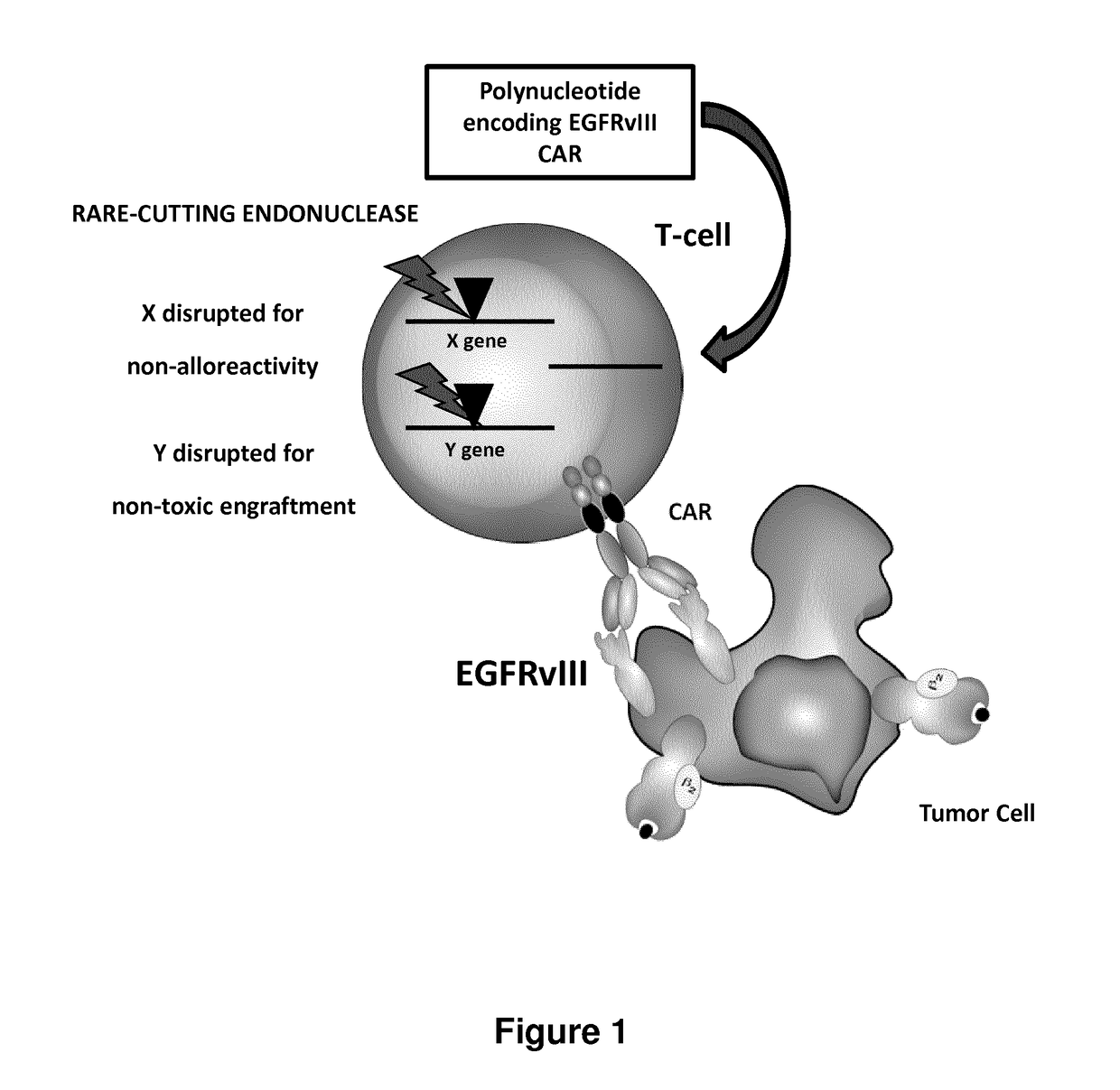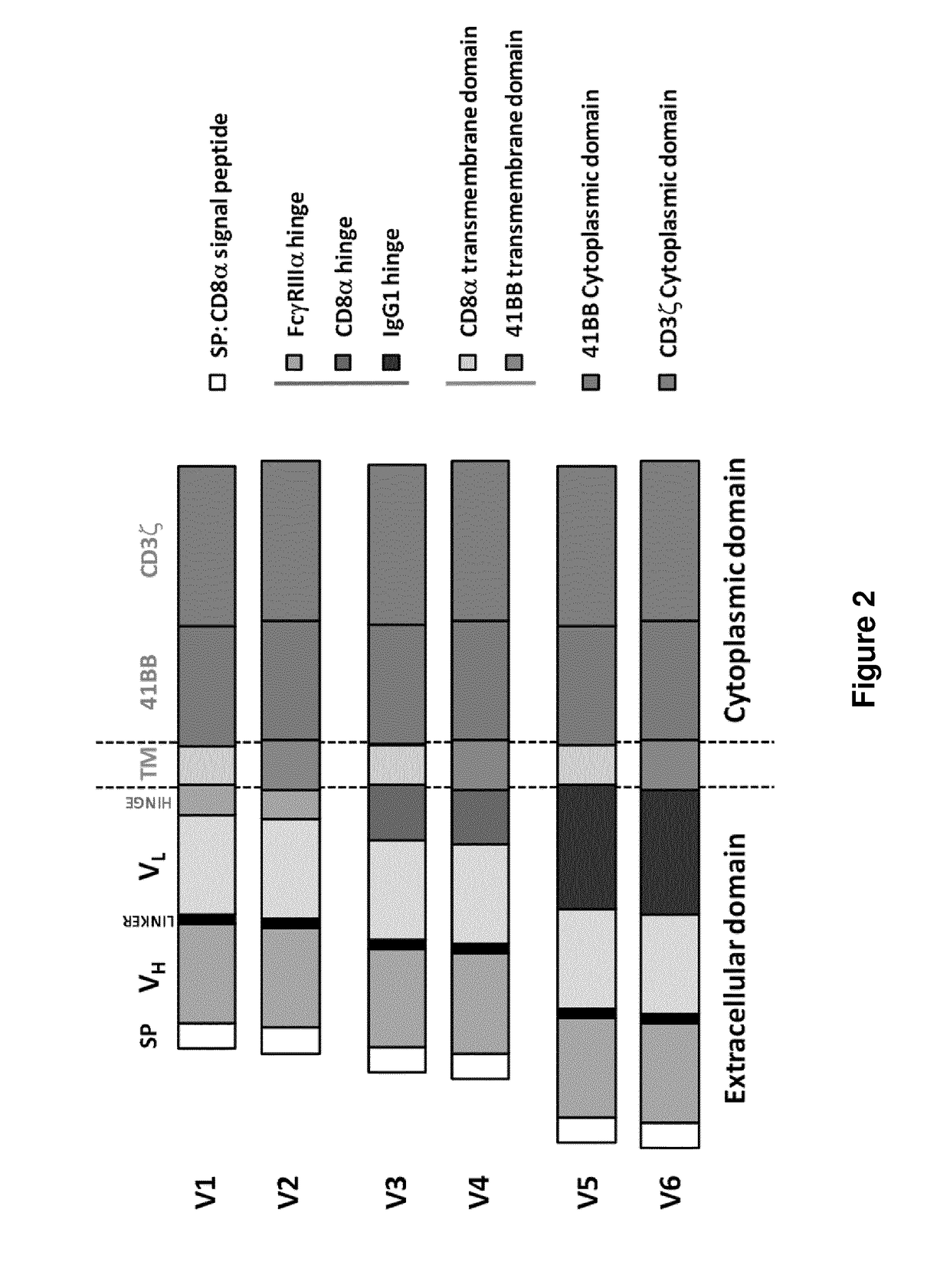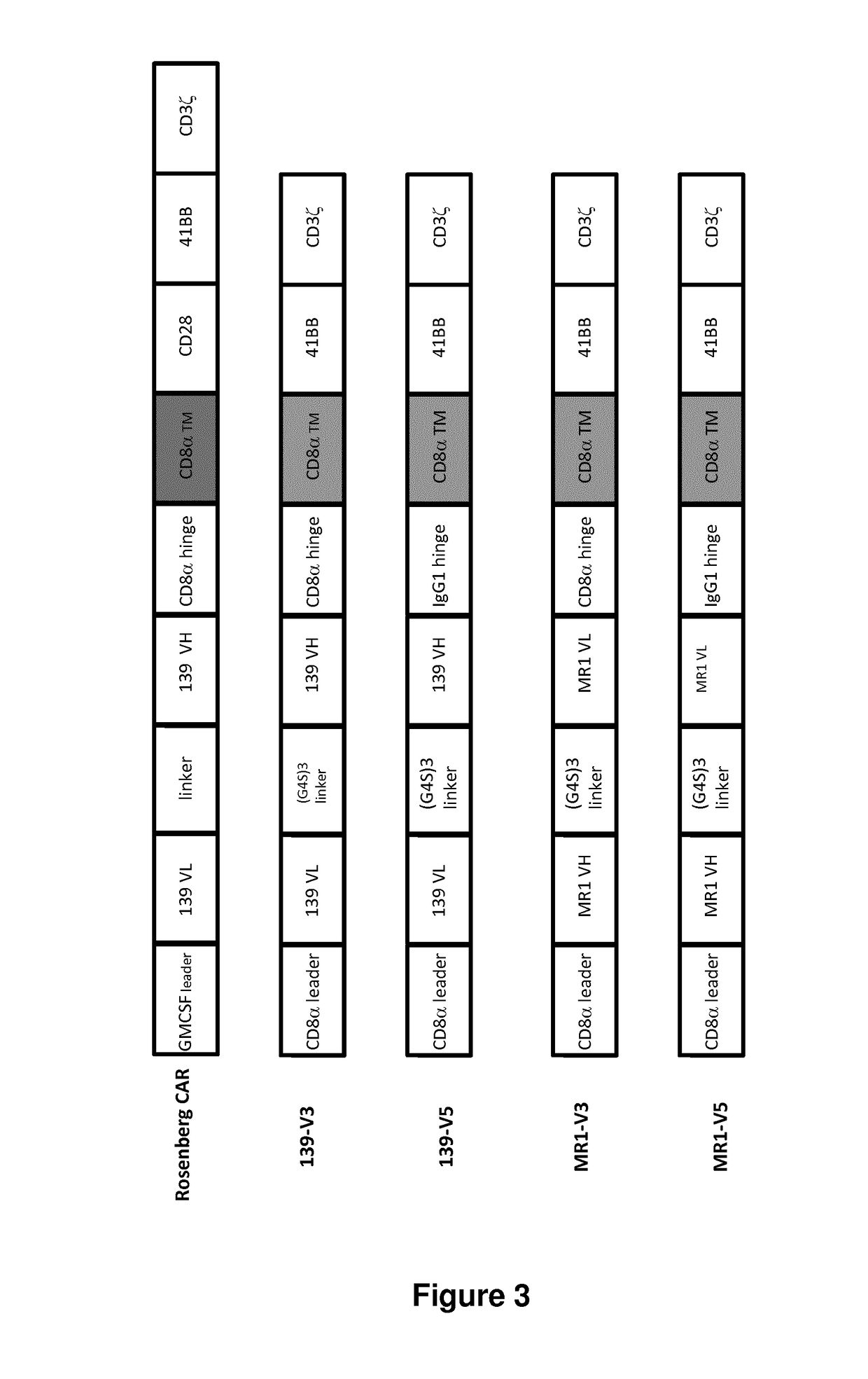EGFRvIII Specific Chimeric Antigen Receptor For Cancer Immunotherapy
a cancer immunotherapy and chimeric antigen technology, applied in the field of chimeric antigen receptors, can solve the problems of inability to provide prolonged expansion and anti-tumor activity in vivo, and cannot be expanded to any antigen
- Summary
- Abstract
- Description
- Claims
- Application Information
AI Technical Summary
Benefits of technology
Problems solved by technology
Method used
Image
Examples
example 1
tion of TCR Alpha Inactivated Cells Expressing an EGFRvIII-CAR
[0729]Heterodimeric TALE-nuclease targeting two 17-bp long sequences (called half targets) separated by an 15-bp spacer within T-cell receptor alpha constant chain region (TRAC) gene were designed and produced. Each half target is recognized by repeats of the half TALE-nucleases listed in Table 10.
TABLE 10TAL-nucleases targetingTCRalpha geneHalfTargetRepeatTALE-TargetsequencesequencenucleaseTRAC_T01TTGTCCCACAGATATRepeatTRAC_T01-LCCAgaaccctgacccTRAC_T01-LTALENtgCCGTGTACCAGCT(SEQ ID(SEQ IDGAGANO: 20)NO: 22)(SEQ ID NO: 19)RepeatTRAC_T01-RTRAC_T01-RTALEN(SEQ ID(SEQ IDNO: 21)NO: 23)
[0730]Each TALE-nuclease construct was subcloned using restriction enzyme digestion in a mammalian expression vector under the control of the T7 promoter. mRNA encoding TALE-nuclease cleaving TRAC genomic sequence were synthesized from plasmid carrying the coding sequence downstream from the T7 promoter.
[0731]Purified T cells preactivated during 72 ...
example 2
CAR-T
[0736]Development of engineered CAR T-cells targeting epidermal growth factor receptor variant III (EGFRvIII), for the treatment of glioblastoma.
[0737]EGFRvIII is most common EGFR mutant and consists of an in-frame deletion of exons 2-7. This deletion results in a truncated extracellular ligand-binding domain, and renders the protein constitutively active in a ligand-independent fashion. EGFRvIII expression has been shown to enhance tumorigenicity, promote cellular motility, and confer resistance to radiation and chemotherapy. EGFRvIII expression has been reported in 24-67% of glioblastomas, but not in any normal tissues, making it an attractive target for immunotherapy with CAR T Cells (FIG. 1).
1. EGFRvIII Cars:
[0738]1.1. Construct
[0739]Four EGFRvIII CARs were designed (FIG. 2 and FIG. 3) and prepared using different scfv as previously described in documents US2010 / 0105136 and US2010 / 0105136 A1 which are incorporated herein by reference in entirety The 139 scfv derived from 13...
PUM
| Property | Measurement | Unit |
|---|---|---|
| temperature | aaaaa | aaaaa |
| polypeptide structure | aaaaa | aaaaa |
| cell surface | aaaaa | aaaaa |
Abstract
Description
Claims
Application Information
 Login to View More
Login to View More - R&D
- Intellectual Property
- Life Sciences
- Materials
- Tech Scout
- Unparalleled Data Quality
- Higher Quality Content
- 60% Fewer Hallucinations
Browse by: Latest US Patents, China's latest patents, Technical Efficacy Thesaurus, Application Domain, Technology Topic, Popular Technical Reports.
© 2025 PatSnap. All rights reserved.Legal|Privacy policy|Modern Slavery Act Transparency Statement|Sitemap|About US| Contact US: help@patsnap.com



